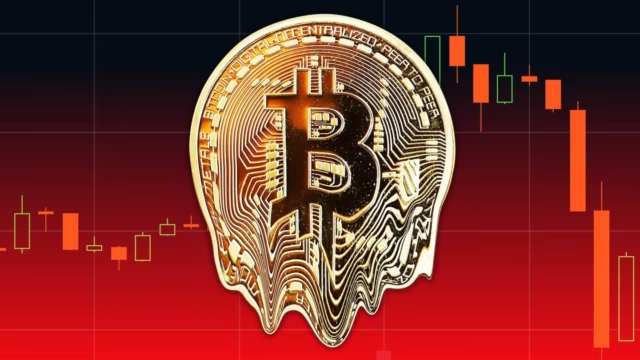
Entering the world of cryptocurrency trading or investing can feel overwhelming. One of the first things you’ll encounter is a chart showing price movements, often looking like a series of colorful rectangles with lines attached. These are usually candlestick charts, and they are a fundamental tool for understanding market sentiment and potential future price changes. At first glance, they might seem confusing, but once you understand what each “candlestick” represents, the chart starts to tell a story. When I first saw a crypto chart, it just looked like abstract art. Learning to read the candlesticks felt like learning a new language, but it opened up a whole new way of analyzing the market.
Reading crypto charts and understanding candlestick patterns is a key skill for anyone looking to make informed decisions in the crypto market. It’s a form of technical analysis, focusing on price and volume data. Here’s a how-to guide to get you started.
Step 1: Understand the Basics of a Price Chart
Before diving into candlesticks, know what the axes of the chart represent.
- Horizontal Axis (X-axis): This axis represents time. It could show minutes, hours, days, weeks, or even months per candlestick, depending on the timeframe you select on the chart.
- Vertical Axis (Y-axis): This axis represents the price of the cryptocurrency.
How to Read the Axes: As you move from left to right along the horizontal axis, you are moving forward in time. The vertical axis shows you the price range the cryptocurrency traded within during the period shown on the chart.
Step 2: Deconstruct a Single Candlestick
Each candlestick on the chart summarizes price activity for a specific time period (e.g., one hour, one day). It contains four crucial pieces of information:
- Open Price: The price at which the first trade occurred during that period.
- High Price: The highest price reached during that period.
- Low Price: The lowest price reached during that period.
- Close Price: The price at which the last trade occurred during that period.
The candlestick has two main parts: the body and the wicks (also called shadows).
- The Body: The thick rectangular part. It shows the range between the open price and the close price.
- The Wicks (Shadows): The thin lines extending above and below the body. The upper wick extends from the top of the body to the high price. The lower wick extends from the bottom of the body to the low price.
How to Read a Candlestick’s Parts: The length of the body tells you the difference between the opening and closing prices. Long wicks indicate that the price moved significantly above or below the open and close during the period.
Step 3: Understand Candlestick Colors
Candlesticks are typically colored to show whether the price went up or down during the period. The colors used can vary slightly between charting platforms, but the concept is the same.
- Green (or sometimes white/hollow): Represents a bullish candlestick. This means the close price was higher than the open price. The bottom of the body is the open price, and the top of the body is the close price.
- Red (or sometimes black/filled): Represents a bearish candlestick. This means the close price was lower than the open price. The top of the body is the open price, and the bottom of the body is the close price.
How to Read Colors: The color immediately tells you if the price increased or decreased over that specific time interval. A long green body shows strong buying pressure, while a long red body shows strong selling pressure.
Step 4: Identify Basic Candlestick Patterns
Individual candlesticks and combinations of a few candlesticks can form patterns that technical analysts use to look for potential future price movements. These patterns are not guarantees, but they can suggest possible trends or reversals. Here are a few basic ones:
- Doji: A candlestick with a very small or non-existent body (the open and close prices are very close or the same) and typically has upper and lower wicks. It looks like a cross or a plus sign.
- Meaning: Indicates indecision in the market. Neither buyers nor sellers were able to take control during that period. A Doji after a strong trend might suggest the trend is losing momentum.
- Hammer (Bullish Reversal): Forms after a downtrend. It has a small body at the top of the trading range, a long lower wick (at least twice the length of the body), and little or no upper wick. The body can be green or red, but green is considered more bullish.
- Meaning: Suggests a potential bullish reversal. The long lower wick shows that sellers pushed the price down, but buyers stepped in and pushed it back up near the open/close. This indicates buying pressure is increasing.
- Inverted Hammer (Bullish Reversal): Forms after a downtrend. It has a small body at the bottom of the trading range, a long upper wick, and little or no lower wick.
- Meaning: Also suggests a potential bullish reversal. The long upper wick indicates buyers tried to push the price up but met resistance. The fact that buyers tried suggests potential upward movement if confirmed.
- Bullish Engulfing (Bullish Reversal): A two-candlestick pattern that appears after a downtrend. The first candle is a small bearish (red) candle, followed by a larger bullish (green) candle whose body completely engulfs the body of the first candle.
- Meaning: Strong signal for a potential bullish reversal. Shows that buyers have aggressively taken control from sellers.
- Bearish Engulfing (Bearish Reversal): A two-candlestick pattern that appears after an uptrend. The first candle is a small bullish (green) candle, followed by a larger bearish (red) candle whose body completely engulfs the body of the first candle.
- Meaning: Strong signal for a potential bearish reversal. Shows that sellers have aggressively taken control from buyers.
- Morning Star (Bullish Reversal): A three-candlestick pattern that appears after a downtrend. It starts with a long bearish (red) candle, followed by a small-bodied candle (the “star” – can be bullish or bearish) that often gaps down, and ends with a long bullish (green) candle that closes well into or above the body of the first bearish candle.
- Meaning: Suggests a strong potential bullish reversal. Represents a shift from selling pressure, to indecision, to strong buying pressure taking over.
How to Identify Patterns: Look for these shapes forming on the chart. Pay attention to where they appear (after an uptrend or downtrend) as this affects their meaning. When I started, I focused on identifying just a few patterns at a time on the live charts.
Step 5: Consider Volume
Most charting platforms also show Volume below the price chart. Volume is the total amount of a cryptocurrency traded during that period.
- How to Read Volume: Volume is usually shown as vertical bars corresponding to each candlestick. Higher bars mean more trading activity.
- Significance: Volume can help confirm patterns. For example, a bullish reversal pattern on high volume might be considered a stronger signal than the same pattern on low volume. It suggests broader market participation in that price movement.
How to Use Volume: Look for increased volume accompanying significant price moves or the formation of key candlestick patterns. It provides context about the strength of the price action.
Putting it All Together
Reading crypto charts and candlestick patterns is a valuable skill, but it’s just one part of analyzing the market.
- Start Simple: Focus on understanding what individual candlesticks mean first.
- Learn a Few Patterns: Don’t try to memorize dozens of patterns at once. Start with basic reversal patterns like Hammer, Engulfing, and Doji.
- Look for Context: Consider where patterns appear (after a trend?) and check volume for confirmation.
- Combine with Other Analysis: Never rely solely on candlestick patterns. Use them alongside other forms of analysis and research.
- Practice: Look at live and historical charts to practice identifying patterns.
Learning to read crypto charts takes time and practice. Candlestick patterns are tools that can provide clues about market sentiment and potential price movements, but they are not crystal balls. They help you understand the battle between buyers and sellers happening in the market. My early days were spent just looking at charts, trying to see the shapes people talked about. With practice, it became much clearer what the bars and wicks were telling me about the price action.










